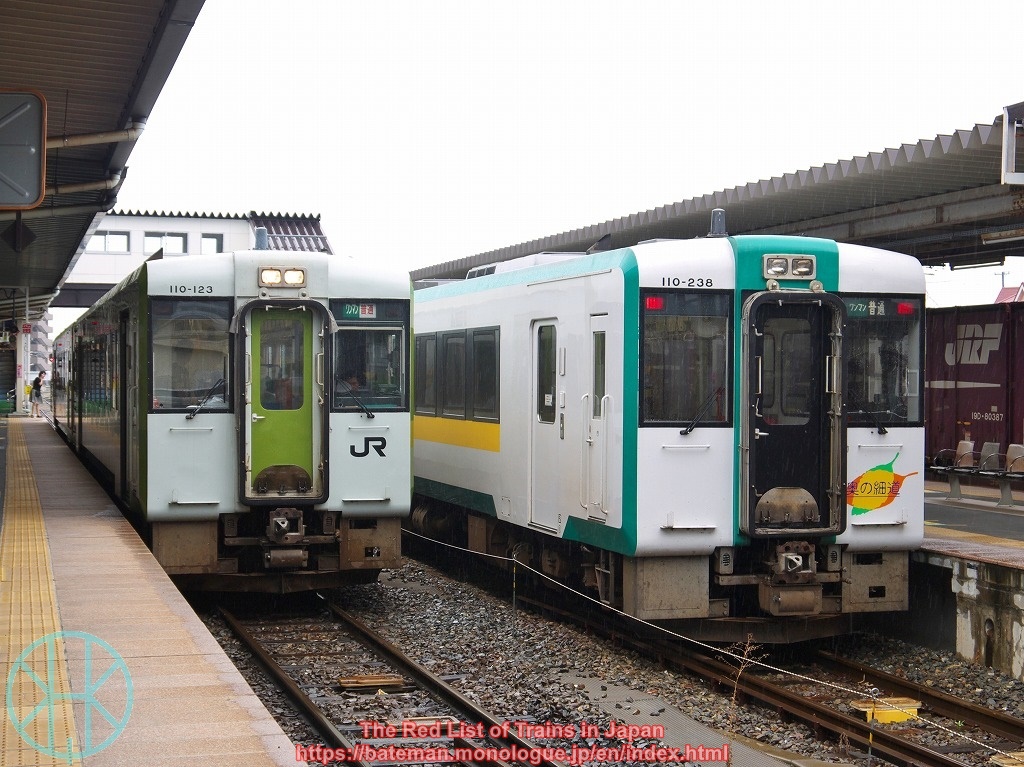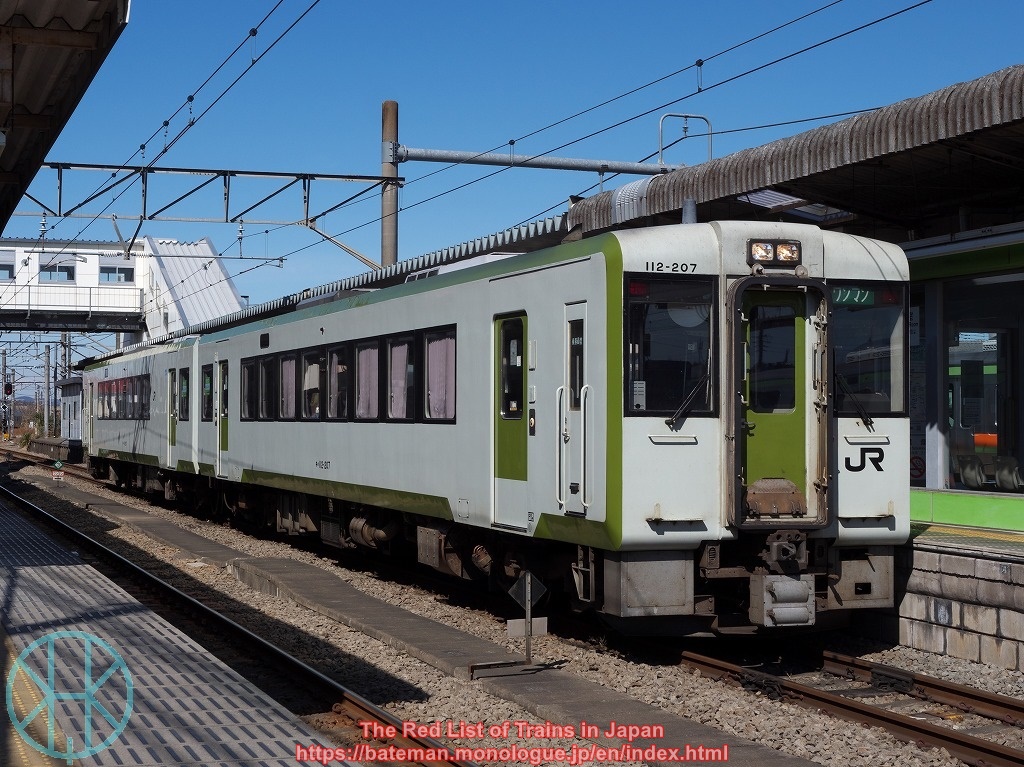JR East KiHa 100 and 110 series

Data (as of 29 Nov 2025)
| Status: | Near Threatened |
| Constructed in: | 1990-99 |
| Number built: | 249 |
| Registered: | 228 |
History
KiHa 100 series is a suburban diesel train type for rural lines. They are often classified as KiHa 100 series in a narrow sense (double-ended with 16 or 17-metre-long body) and KiHa 110 series (20-metre long body forming two-carriage unit). They replaced old diesel trains like KiHa 20 series, and made journey times shorter than before. The KiHa 100 series was welcomed by local residents at the time of introduction, as all carriages are air-conditioned.
The KiHa 100 series has been used mostly on stopping services, but they were used for a few express and even limited express in the past. The KiHa 110 series was first introduced on Express Rikuchu (Morioka - Miyako via Kamaishi Line), and also used on Limited Express Akita Relay (Kitakami - Akita via Kitakami Line) when Tazawako Line was closed due to track improvement work in 1996-97. Other carriages were introduced to various rural lines from Aomori to Saitama Prefectures. However, those on Suigun Line were superseded by KiHa E130 series, since the KiHa 100 series could not deal with severe congestion.
They can join to KiHa E120 series carriages and the KiHa E130 series. However, since those newer trains were reallocated to different places, they no longer join to each other.
Some redundant carriages were converted to tourist trains, such as Oikotto (Iiyama Line), POKÉMON with YOU (Ofunato Line) and Tohoku Emotion (Hachinohe Line).
Current Operations & Future Prospects
The KiHa 100 series are used across Tohoku region including Aterazawa, Ban-etsu East / West, Hachiko, Ishinomaki, Kamaishi, Kesennuma, Kitakami, Koumi, Ofunato, Ominato, Rikuu East / West and Tadami Lines. Some run major lines like Shin-etsu Main and Tohoku Main Lines. In many cases, services provided by the series are drive-only.
JR East has decided to replace the series on Hachiko and Kamaishi Lines with brand new trains in late-2025 or early-2026. Other remaining ones are also likely to be phased out as they are more than or nearly 30 years old.
A few carriages were resold to Hitachinaka Seaside Railway in Ibaraki Prefecture, indicating that more KiHa 100 or 110 series trains could be acquired by rural private railways in the near future.
Photos

Komagawa station in Saitama Prefecture is the closest place to Tokyo to see the KiHa 110 series.

Some units in Tohoku region are painted differently.
(Updated: 29 Nov 2025)
